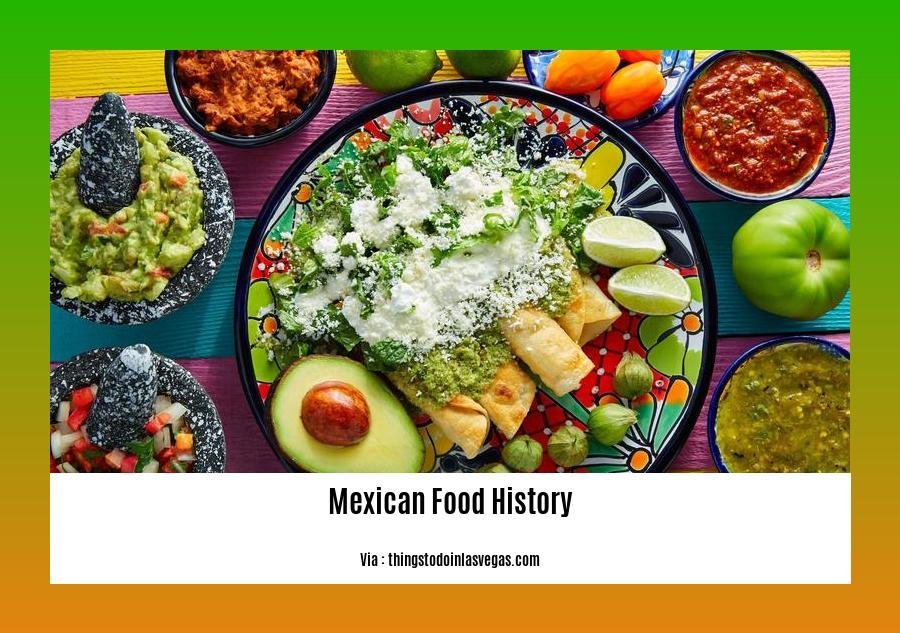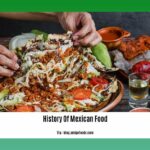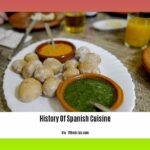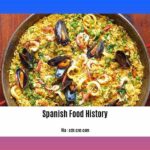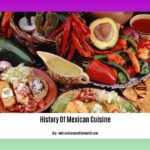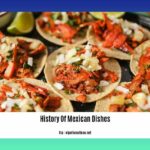Embark on a culinary voyage as we unravel the rich tapestry of Mexican food history in A Culinary Voyage: Unraveling the Rich Tapestry of Mexican Food History. Discover the fascinating origins, diverse regional cuisines, and cultural influences that have shaped this vibrant culinary tradition. Explore the stories behind iconic dishes, traditional cooking techniques, and the deep-rooted significance of food in Mexican culture.
Key Takeaways:
Mexican cuisine is a fusion of indigenous and Spanish influences.
The roots of Mexican food can be traced back to the Mayan culture, emphasizing hunting, gathering, and maize cultivation.
The Aztec Empire played a role in shaping the culinary traditions of Mexico, particularly in the central region.
The arrival of the Spanish in the 16th century brought new ingredients like wheat, rice, dairy, and meat to the Mexican diet.
Mexican Food History: A Culinary Symphony of Flavors
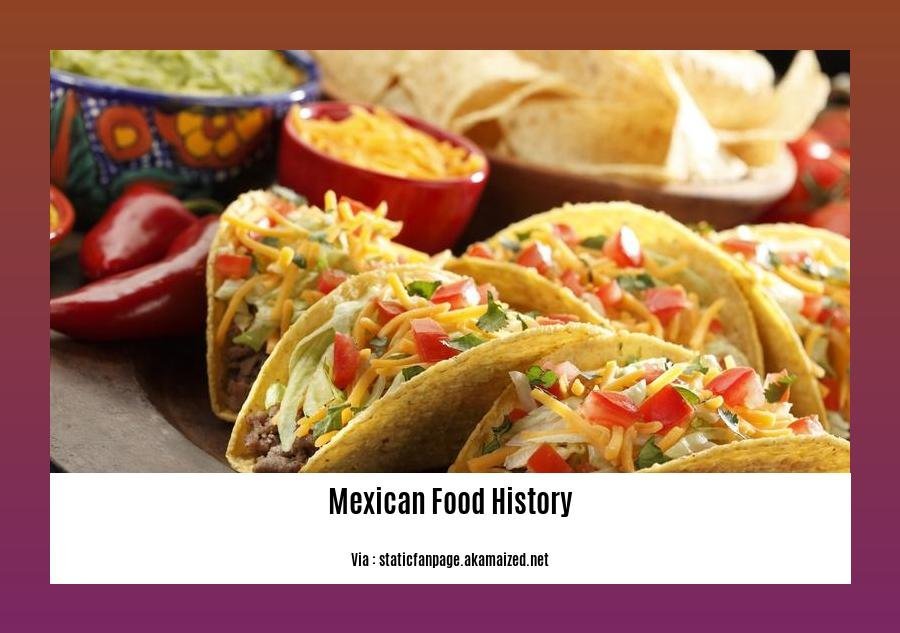
The story of Mexican cuisine, a symphony of flavors and colors, is a captivating journey through history, culture, and tradition. Join us as we embark on a culinary adventure to unravel the rich tapestry of Mexican food history.
Ancient Roots: The Indigenous Foundation
The culinary journey begins with Mexico’s earliest inhabitants, the Mayans and Aztecs. Maize (corn) was the cornerstone of their diet, revered as a sacred crop and a symbol of life. They cultivated a variety of corn, using it to make tortillas, tamales, and pozole, dishes that remain staples of Mexican cuisine today.
The Aztecs, who ruled central Mexico before the Spanish conquest, were renowned for their elaborate culinary creations. They employed a wide range of cooking techniques, including boiling, roasting, and steaming. Their palate favored spicy flavors, using chiles, tomatoes, and herbs to add depth and complexity to their dishes.
The Spanish Influence: A Culinary Fusion
The arrival of the Spanish in the 16th century marked a pivotal moment in Mexican food history. They brought with them new ingredients, such as wheat, rice, dairy, and meat, which blended with the native ingredients to create a unique culinary fusion.
Wheat became a staple, leading to the creation of tortillas, bread, and pastries. Rice, introduced from Asia, became a popular side dish, often paired with beans or stews. Dairy products, such as milk, cheese, and yogurt, were incorporated into Mexican cuisine, adding a creamy richness to dishes like enchiladas and soups.
The Spanish also introduced new cooking techniques, such as frying and baking, which expanded the culinary repertoire of Mexican cuisine.
The Birth of Modern Mexican Cuisine
The amalgamation of indigenous and Spanish culinary traditions gave rise to modern Mexican cuisine, a vibrant and diverse expression of Mexico’s rich history and culture. Regional variations emerged, influenced by geography, climate, and local ingredients.
In the northern states, for example, beef and wheat became prominent, leading to the development of dishes like carne asada and flour tortillas. In the coastal regions, seafood played a central role, with dishes like ceviche and pescado frito (fried fish) becoming local favorites.
Mexican Cuisine Today: A Global Culinary Treasure
Today, Mexican cuisine stands as a testament to the enduring legacy of its indigenous and colonial past. It is a vibrant and dynamic cuisine, constantly evolving and adapting to modern tastes and trends.
Mexican food has gained global recognition and popularity, with restaurants serving authentic Mexican dishes found in cities worldwide. It is celebrated for its bold flavors, vibrant colors, and the sense of joy and community it evokes.
So, let’s savor the flavors and explore the rich history of Mexican cuisine, a culinary journey that continues to captivate and inspire food lovers around the world.
- Learn about the fascinating tradition of wedding cakes and their symbolic significance throughout history. history of wedding cakes
- Unveiling the rich history of Moroccan cuisine, from its diverse influences to the unique flavors and dishes that have shaped its culinary identity. moroccan cuisine history
- Explore the intriguing journey of ranch dressing, from its humble beginnings as a regional favorite to its global acclaim as a beloved condiment. ranch dressing history
Evolution of Regional Cuisines and Culinary Traditions
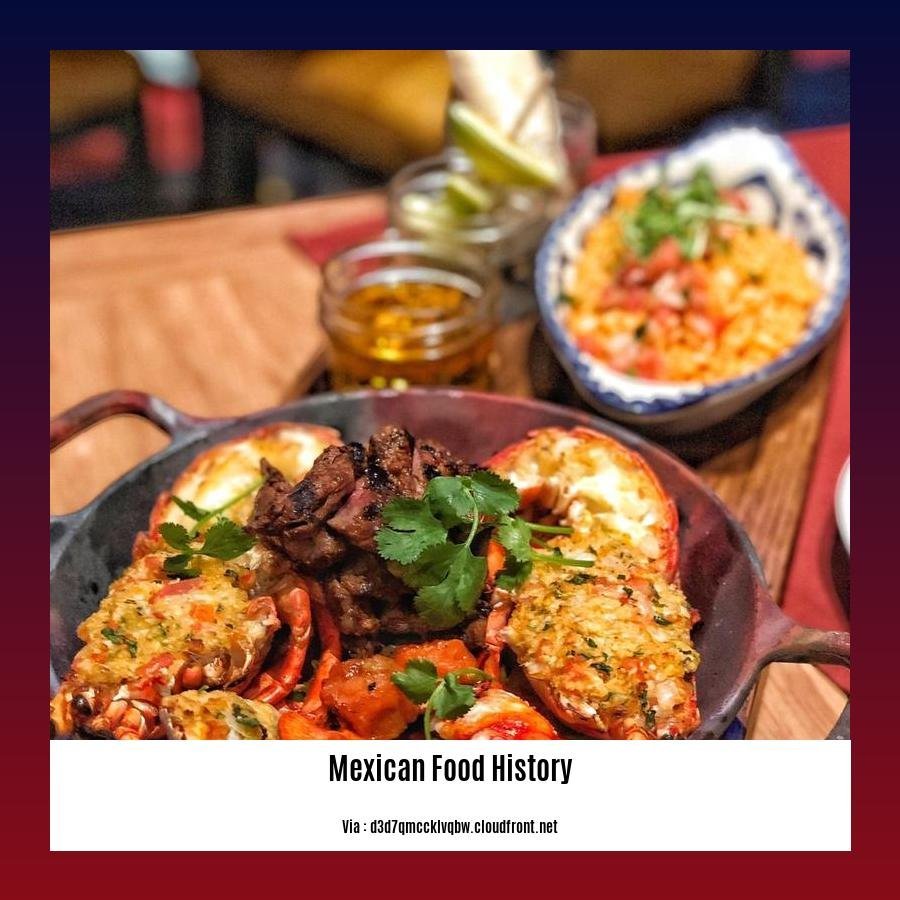
In the realm of gastronomy, few cuisines can rival the vibrant tapestry of flavors and textures found in Mexican cuisine. A product of a rich amalgamation of indigenous, Spanish, and global influences, Mexican food has undergone a fascinating evolution, resulting in diverse regional cuisines and culinary traditions that reflect the nation’s rich tapestry of cultures and traditions.
The Indigenous Foundations: A Culinary Legacy Rooted in Nature
Mexico’s culinary heritage has its roots deeply embedded in the traditions of ancient civilizations, such as the Mayans, Aztecs, and Olmecs. These early cultures held a profound reverence for maize (corn), cultivating it as a sacred crop that formed the cornerstone of their diet. From this humble grain, they crafted a myriad of dishes, including tortillas, tamales, and pozole, each a testament to their ingenuity and culinary prowess. Furthermore, the Aztecs displayed a predilection for spicy flavors, incorporating chiles, tomatoes, and herbs into their cooking to create vibrant and complex dishes.
The Spanish Influence: A Fusion of Flavors and Techniques
The arrival of the Spanish in the 16th century marked a pivotal juncture in the evolution of Mexican cuisine. They brought with them a host of new ingredients, including wheat, rice, dairy products, and a variety of meats, which profoundly transformed the culinary landscape. Wheat, in particular, played a pivotal role, leading to the creation of tortillas, bread, and pastries that became staples of the Mexican diet. Rice, too, gained prominence, often paired with beans or stews to create hearty and flavorful dishes. The introduction of dairy products added a touch of creaminess to traditional dishes, while new cooking techniques, such as frying and baking, expanded the culinary repertoire of Mexican cuisine.
The Birth of Modern Mexican Cuisine: A Symphony of Flavors
As the centuries passed, the fusion of indigenous and Spanish culinary traditions gave birth to modern Mexican cuisine, a vibrant tapestry of flavors that reflected the nation’s unique cultural heritage. Regional variations emerged, influenced by geography, climate, and the availability of local ingredients. In the northern states, where cattle ranching was prevalent, beef and wheat became prominent, leading to the development of dishes like carne asada and flour tortillas. Along the coastal regions, seafood took center stage, with dishes like ceviche and pescado frito (fried fish) becoming local favorites.
Mexican Cuisine Today: A Global Culinary Phenomenon
In recent decades, Mexican cuisine has captured the hearts and palates of people worldwide, becoming a global culinary phenomenon. The vibrant flavors, bold colors, and sense of joy and community that it evokes have made it a beloved cuisine around the world. Mexican restaurants serving authentic dishes can now be found in every corner of the globe, a testament to the enduring appeal and universal love for this culinary treasure.
Key Takeaways:
- Mexican cuisine is a fusion of indigenous, Spanish, and global influences.
- The indigenous cultures of Mexico, such as the Mayans, Aztecs, and Olmecs, had a rich culinary tradition centered around maize (corn) and spicy flavors.
- The Spanish brought new ingredients and cooking techniques to Mexico, which transformed the culinary landscape and led to the creation of modern Mexican cuisine.
- Modern Mexican cuisine is characterized by regional variations that reflect the unique cultural heritage and geography of each region.
- Mexican cuisine is celebrated worldwide for its bold flavors, vibrant colors, and sense of joy and community.
Citations:
Historical significance of Mexican food beyond borders
Have you ever wondered how Mexican cuisine evolved from simple indigenous ingredients to the vibrant and globally adored flavors we know today? That’s precisely what we’ll explore in this historical food journey.
The Magic of Ancient Roots:
– Imagine a time when corn was not just a staple crop but a sacred symbol, reverently used to craft tortillas, tamales, and the rich stew, pozole.
– The Aztecs, with their culinary prowess, utilized a diverse array of cooking techniques, mastering the art of spicing with chiles, tomatoes, and aromatic herbs, forming the foundation of modern Mexican cuisine.
The Spanish Influence: A Fusion of Flavors:
– The arrival of the Spanish marked a dramatic shift, introducing a symphony of new flavors and ingredients—wheat, rice, dairy, and various meats.
– The incorporation of wheat led to the creation of tortillas, bread, and delectable pastries, while rice became a beloved side dish, often paired with beans or flavorful stews.
– Dairy products added a touch of creaminess to enchiladas and soups, enriching the culinary landscape.
– New cooking methods like frying and baking expanded the culinary repertoire, adding depth and variety to Mexican cuisine.
The Birth of Modern Mexican Cuisine: A Harmonious Blend:
– Through a harmonious fusion of indigenous and Spanish traditions, modern Mexican cuisine emerged as a masterpiece of culinary artistry.
– Regional variations flourished, influenced by geography, climate, and the unique ingredients found in each region.
– Northern states embraced beef and wheat, giving rise to dishes like carne asada and the irresistible flour tortillas.
– Coastal regions celebrated the bounty of the sea, creating dishes like ceviche and pescado frito, a crispy fried fish that’s a local delight.
A Culinary Legacy: Tantalizing the World
– Today, Mexican cuisine stands as a global culinary giant, with restaurants worldwide serving authentic dishes that tantalize taste buds and evoke a sense of joy and community.
– Its bold flavors, vibrant colors, and the sheer joy it brings have made it a beloved cuisine, transcending borders and becoming a cherished part of global culinary heritage.
Key Takeaways:
- Ancient Roots: The indigenous peoples of Mexico laid the foundation with corn as their staple crop and a range of cooking techniques.
- Spanish Fusion: The arrival of the Spanish introduced new ingredients and cooking methods, blending with indigenous traditions to create modern Mexican cuisine.
- Regional Diversity: Mexico’s diverse geography and climate led to regional variations, showcasing unique ingredients and culinary styles.
- Global Recognition: Mexican cuisine has gained worldwide acclaim for its bold flavors, vibrant colors, and ability to evoke joy and community.
References
Contemporary Influences and Modern Interpretations of Mexican Cuisine
Let’s fiesta our taste buds with the ever-evolving journey of Mexican cuisine!
We all know that Mexican food is like a fiesta in your mouth, but have you noticed how it’s also constantly evolving? Chefs are taking traditional recipes and adding their own unique twists, creating dishes that are both modern and authentic.
Culinary Fusion Magic:
Mexican food is like a chameleon, blending seamlessly with other culinary traditions. Japanese-Mexican fusion offers up delights like sushi burritos, while Korean tacos add a spicy kick.
Vegetarian Revolution:
The vegetarian movement has made its mark on Mexican cuisine, with chefs creating innovative plant-based versions of classic dishes. From jackfruit carnitas to cauliflower tacos, there’s something for every veggie lover.
Sustainability on the Menu:
Sustainability is no longer just a buzzword; it’s a way of life for many modern Mexican restaurants. They’re sourcing local and seasonal ingredients, reducing food waste, and supporting sustainable farming practices.
Michelin-Star Mexican Chefs:
Mexican cuisine is finally getting the recognition it deserves. Chefs like Enrique Olvera and Daniela Soto-Innes are earning Michelin stars and accolades for their innovative takes on traditional dishes.
Street Food Meets Fine Dining:
The lines between street food and fine dining are blurring in the Mexican culinary scene. Chefs are elevating humble street food dishes, using high-quality ingredients and creative presentations.
Modern Moles and Salsas:
Moles and salsas are the heart and soul of Mexican cuisine, and modern chefs are experimenting with new flavor combinations and techniques. From mole made with huitlacoche to salsas featuring exotic fruits, the possibilities are endless.
Artisanal Ingredients:
Mexican chefs are embracing artisanal ingredients, like handmade tortillas, small-batch mezcal, and artisanal cheeses. These ingredients add a unique touch to modern Mexican dishes.
Culinary Festivals:
Mexico is home to a growing number of culinary festivals, where chefs showcase their latest creations and celebrate the diversity of Mexican cuisine.
Social Media and Food Influencers:
- Social media and food influencers are playing a role in shaping modern Mexican cuisine. They’re sharing their love of Mexican food with the world, inspiring home cooks to experiment with new flavors and techniques.
Key Takeaways:
- Mexican cuisine is evolving, blending traditional recipes with contemporary influences.
- Chefs are experimenting with fusion, vegetarian options, sustainability, and modern techniques.
- Mexican cuisine is gaining recognition on the global culinary stage, with chefs earning Michelin stars and accolades.
- Artisanal ingredients, culinary festivals, and social media are shaping the future of Mexican food.
Relevant URL Sources:
- The Evolution of Mexican Cuisine: How Modern Chefs Are Reinventing Traditional Dishes
- Mexican Cuisine: A Culinary Revolution
FAQ
Q1: What are the main influences on Mexican cuisine?
A1: Mexican cuisine is a fusion of indigenous, Spanish, and French influences. Ancient civilizations like the Mayans, Aztecs, and Olmecs played a significant role in shaping the culinary traditions, while the Spanish introduced new ingredients like wheat, sugar, and dairy products.
Q2: When did UNESCO recognize Mexican cuisine as an Intangible Cultural Heritage of Humanity?
A2: In 2010, UNESCO recognized Mexican cuisine as an Intangible Cultural Heritage of Humanity, solidifying its place as one of the world’s most cherished culinary traditions.
Q3: What are some common ingredients used in Mexican cooking?
A3: Mexican cuisine often features corn, beans, tomatoes, chilies, and an array of spices. These ingredients are woven together to create dishes that showcase the unique flavors and aromas of Mexican cooking.
Q4: How did the Spanish invasion impact Mexican cuisine?
A4: The Spanish invasion brought new ingredients and cooking techniques to Mexico. Wheat, rice, dairy, and meat became integral parts of the Mexican diet, transforming the culinary landscape and leading to the creation of new dishes and flavors.
Q5: What other cultures have influenced Mexican cuisine throughout history?
A5: In addition to indigenous, Spanish, and French influences, Mexican cuisine has also incorporated elements from South America, West Africa, the Caribbean, Portugal, and the Philippines. This diverse mix of influences has contributed to the richness and complexity of Mexican food.
- Senior at What Age: Benefits & Eligibility Guide - March 29, 2025
- Unlocking Senior Benefits: How Old is a Senior? Your Complete Guide - March 29, 2025
- Master Russian Politeness:A Guide to Saying Please - March 29, 2025
